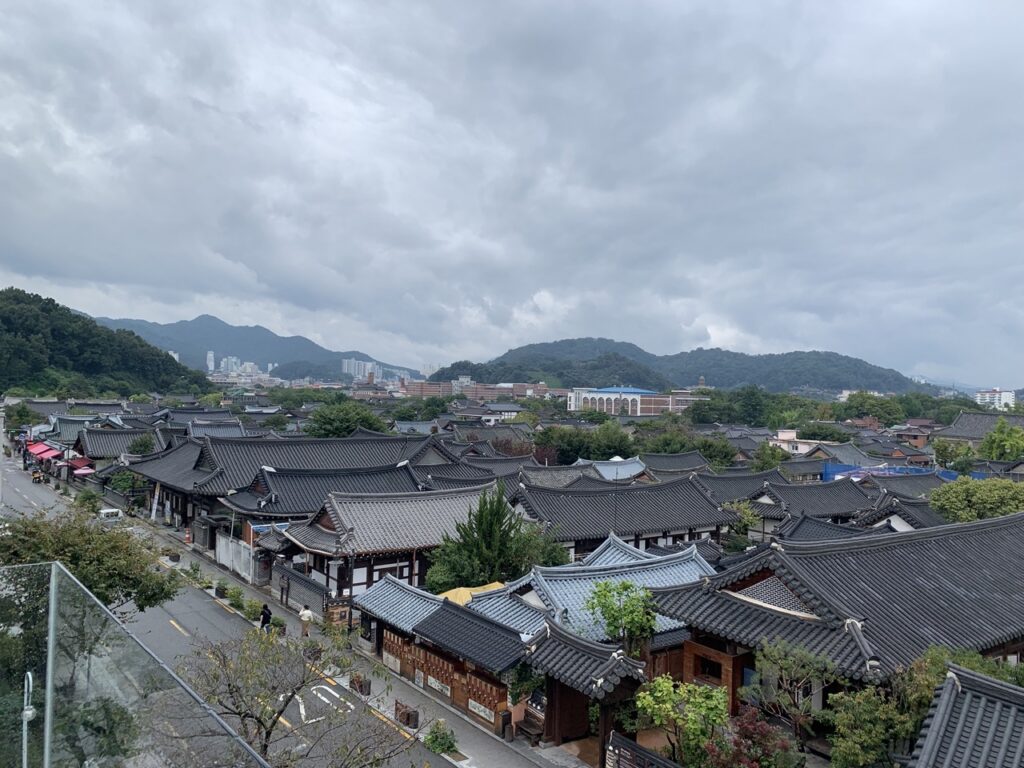Jeonju Hanok Village – Tourist attractions – South Korea
Jeonju Hanok Village is one of the tourist attractions in Jeonju, a city in the North Jeolla Province of South Korea. It is renowned for its well-preserved traditional Korean hanok houses, which showcase the architectural style of the Joseon Dynasty. Here are some key features and information about Jeonju Hanok Village:
Historical Significance
Jeonju Hanok Village is recognized for its historical and cultural significance. Many of the hanoks (traditional Korean houses) in the village date back to the Joseon Dynasty (1392-1897), and some have been preserved for centuries.
Architecture
The hanoks in the village typically feature curved tiled roofs, wooden beams, and a central open courtyard. The design is intended to harmonize with the natural surroundings and provide a sense of balance and simplicity. Visitors can experience the charm of traditional Korean architecture as they stroll through the narrow alleyways.
Cultural Activities
The village offers various cultural experiences, allowing visitors to immerse themselves in traditional Korean arts and crafts. These activities may include wearing hanbok (traditional Korean clothing), making traditional crafts, and participating in tea ceremonies.
Local Cuisine
Jeonju is also famous for its local cuisine, particularly bibimbap (a mixed rice dish with vegetables, meat, and spicy sauce). In Jeonju Hanok Village, visitors can enjoy authentic Korean meals at traditional restaurants that have been serving local dishes for generations.
Craft Shops and Galleries
The village is home to numerous craft shops, galleries, and boutiques where visitors can purchase handmade crafts, traditional souvenirs, and artwork created by local artisans.
Hanbok Experience
Many visitors choose to rent and wear hanbok while exploring the village. This provides a unique and immersive experience, allowing individuals to feel a connection to Korea’s cultural heritage.
Night View
The village takes on a different charm at night when the hanoks are illuminated, creating a serene and enchanting atmosphere. It’s a popular time for visitors to take leisurely strolls and appreciate the beauty of the traditional architecture in a tranquil setting.
Jeonju Hanok Village has become a symbol of Korean cultural heritage, attracting both domestic and international tourists. It offers a glimpse into the country’s rich history and traditions, making it a must-visit destination for those interested in experiencing traditional Korean culture.
Location
Story
In the early fall of 2023, I took about 3 hours by car from Yangsan, South Gyeongsang Province, with my parents, and arrived around 8 p.m. It was the first trip to Jeonju in my life, so I had high expectations. As soon as I arrived, I unpacked my luggage at the hotel (not sure if it was the right word) and went to eat Jeonju Korean food.
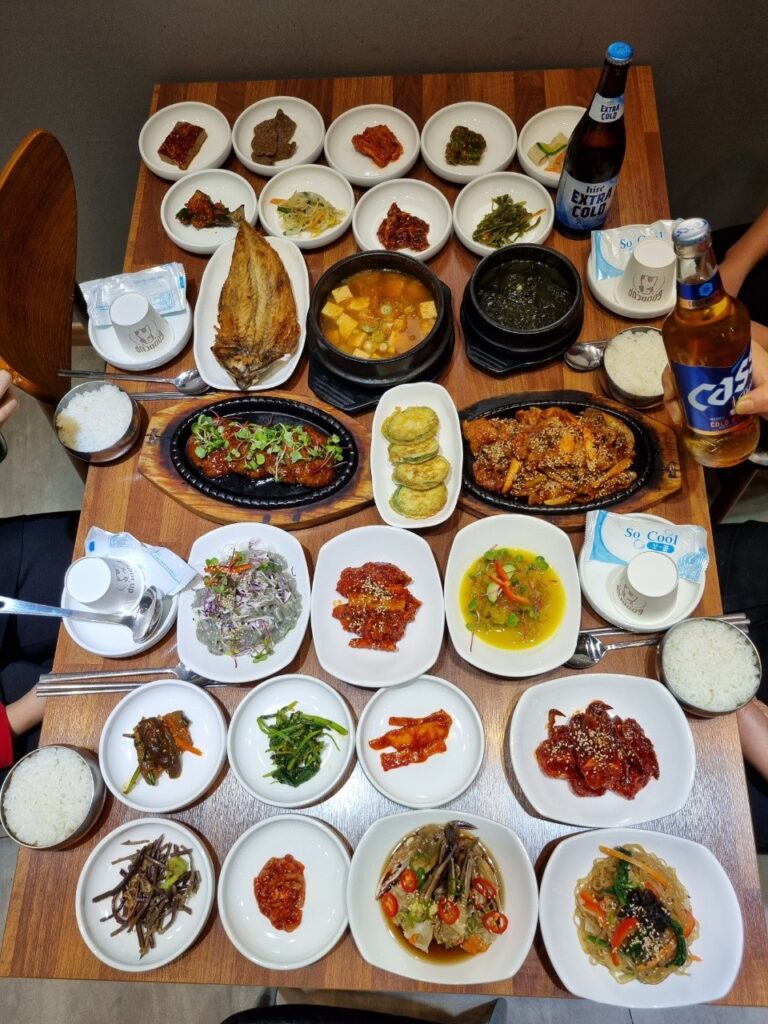
It doesn’t make sense because it’s only about 10,000 won for about 20 side dishes. And the food was fresh and I loved that only my favorite food came out. When I came to a tourist destination about 20 years ago, I felt bad because of the high price of the food. If you want to eat this kind of Korean food in Canada, you’ll have to pay at least $50. We were the last guests, so we quickly went to the hotel. The location of this restaurant is below.
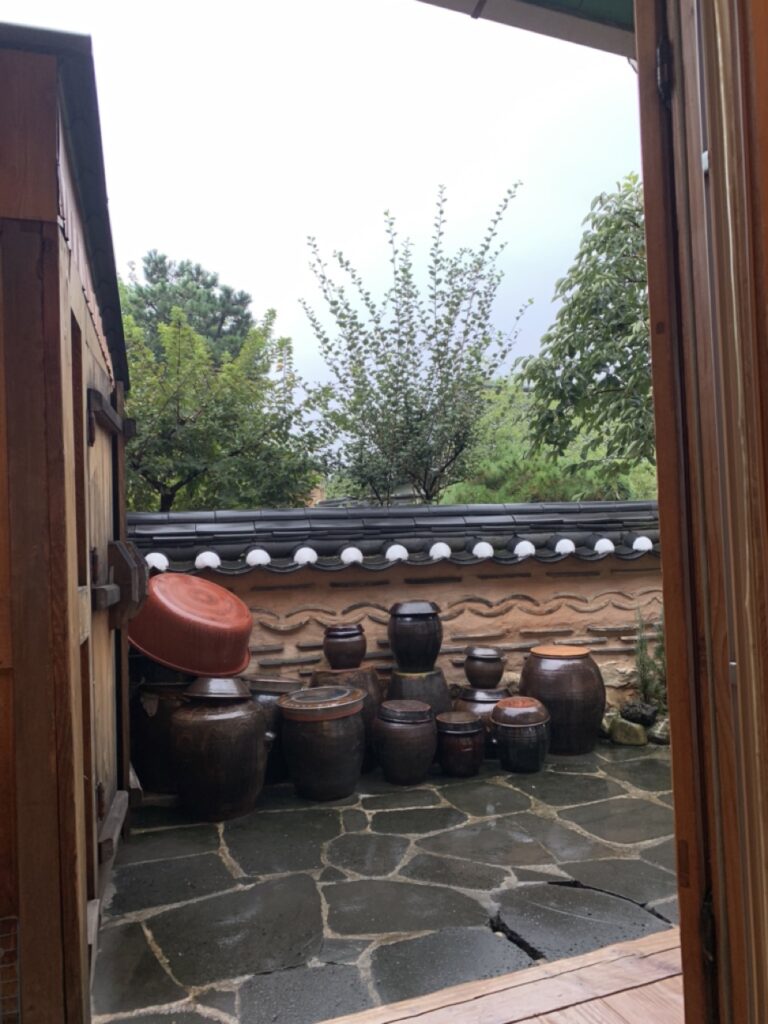
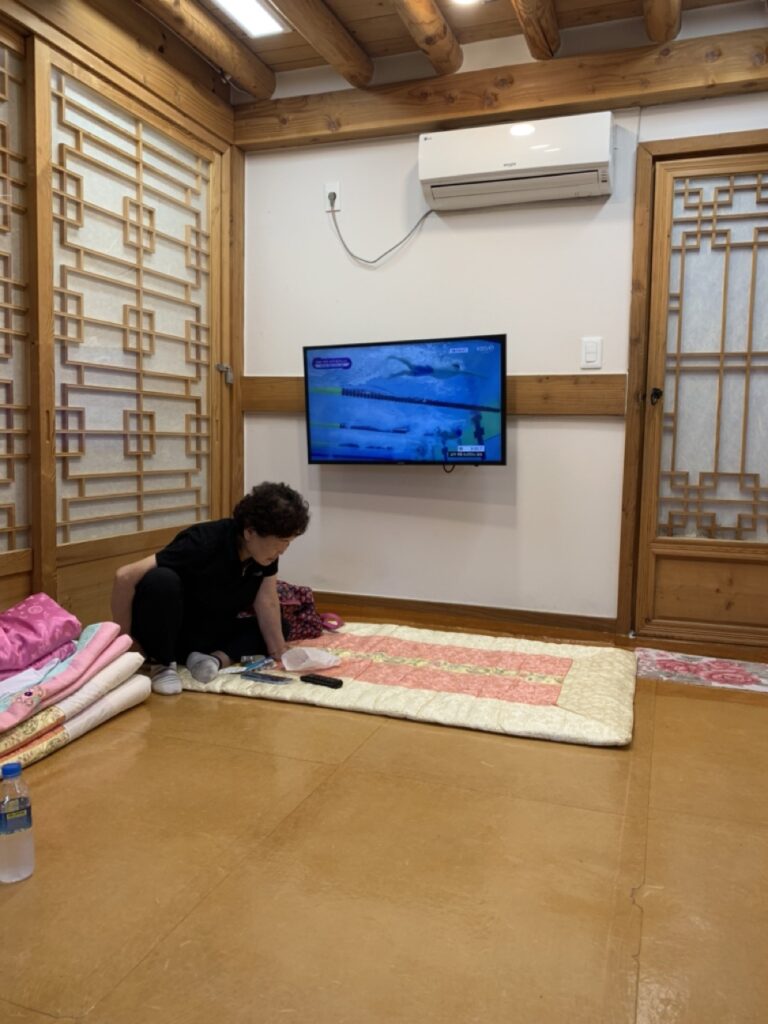
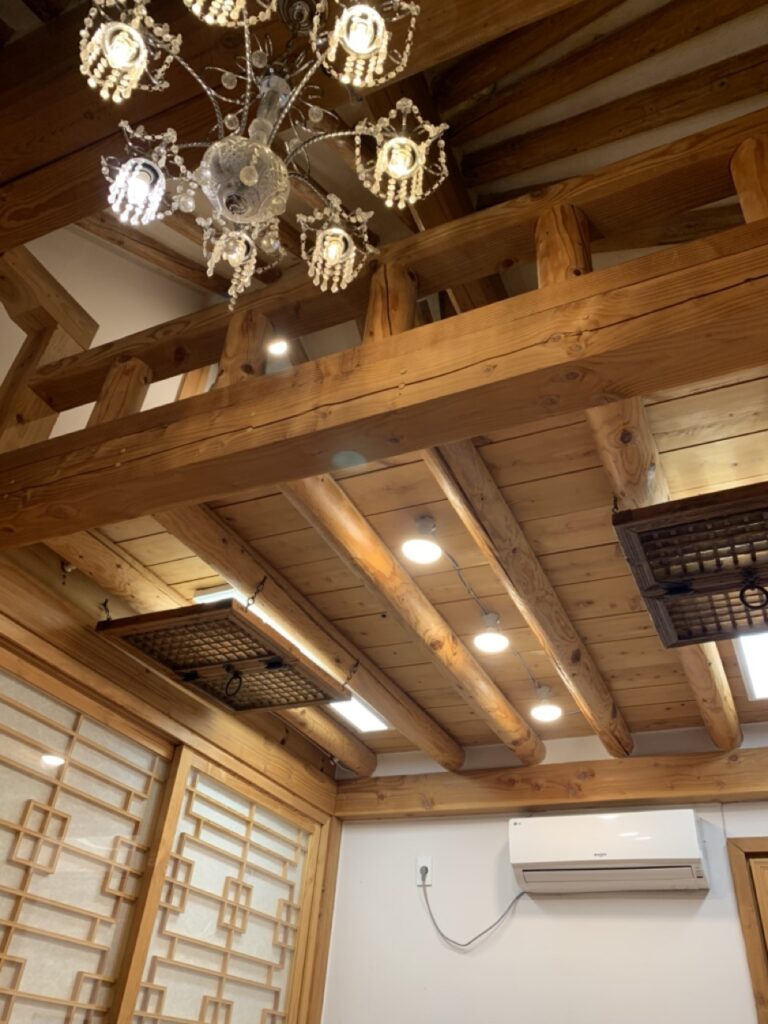
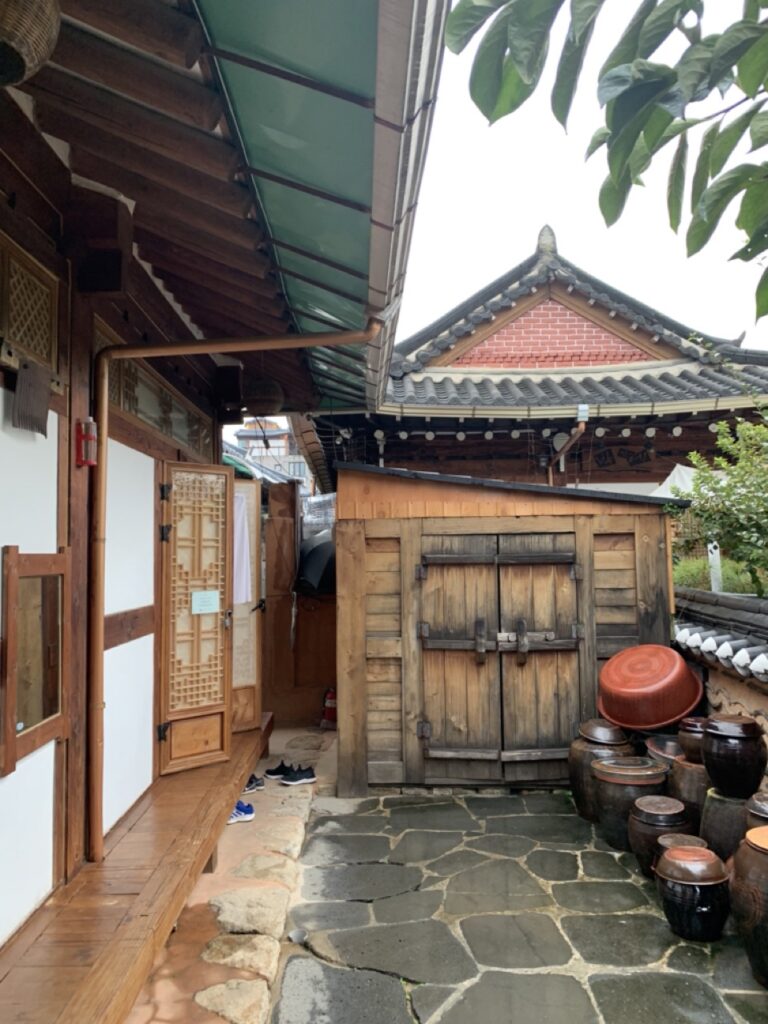
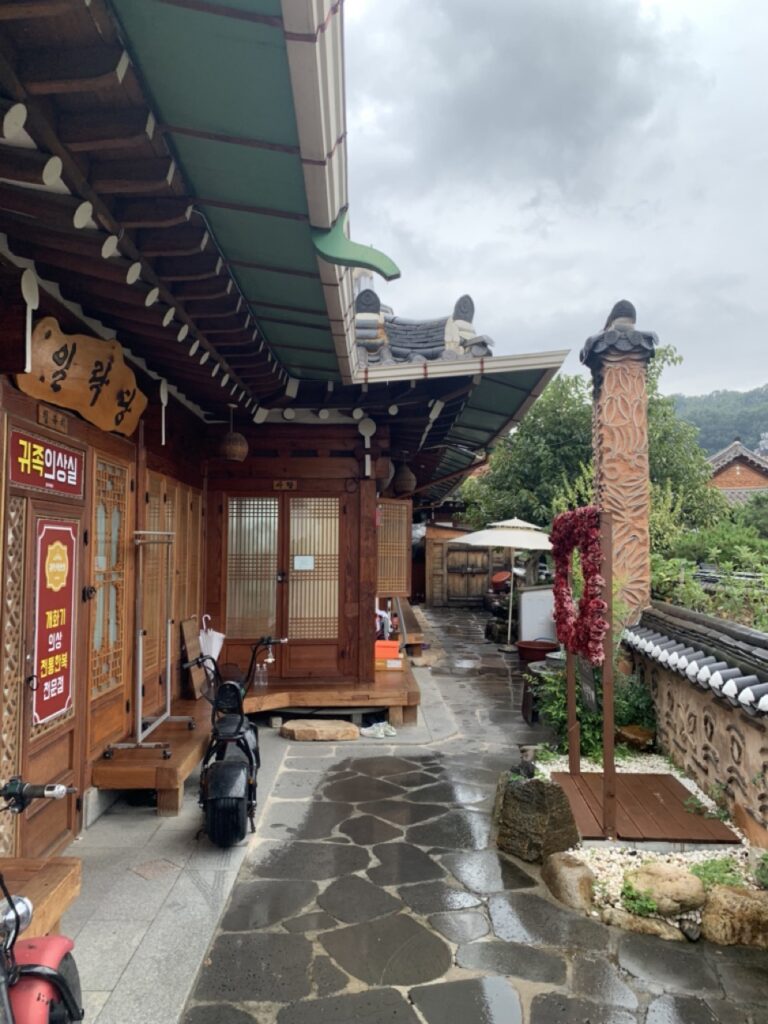
It’s a really traditional Korean house. I don’t know what wood it’s made of, but it’s not like the material that makes a house in Canada or the United States. It’s not that spacious, but it has two floors, so it’s enough for 4 people to sleep. Thank you so much for bringing me a simple breakfast in the morning. It’s raining, which makes it more atmospheric. For your information, the cost of staying here is about 50,000 won.
Here, Jeonju is a city of the Joseon Dynasty. In other words, this is where Jeonju Lee lived in Korea began. It would be good to search for detailed history on the Internet in advance and come. Let’s stop by the Joseon Dynasty’s shrine and take a picture. I took a lot of pictures, but I can’t find it strangely.

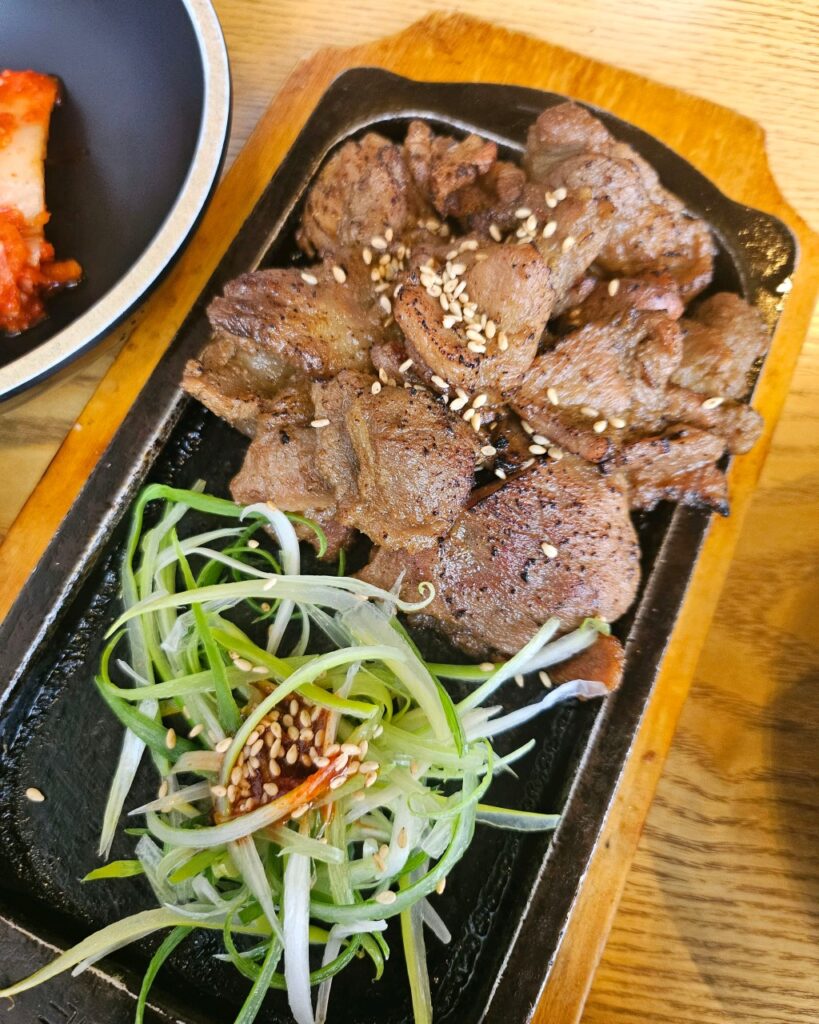
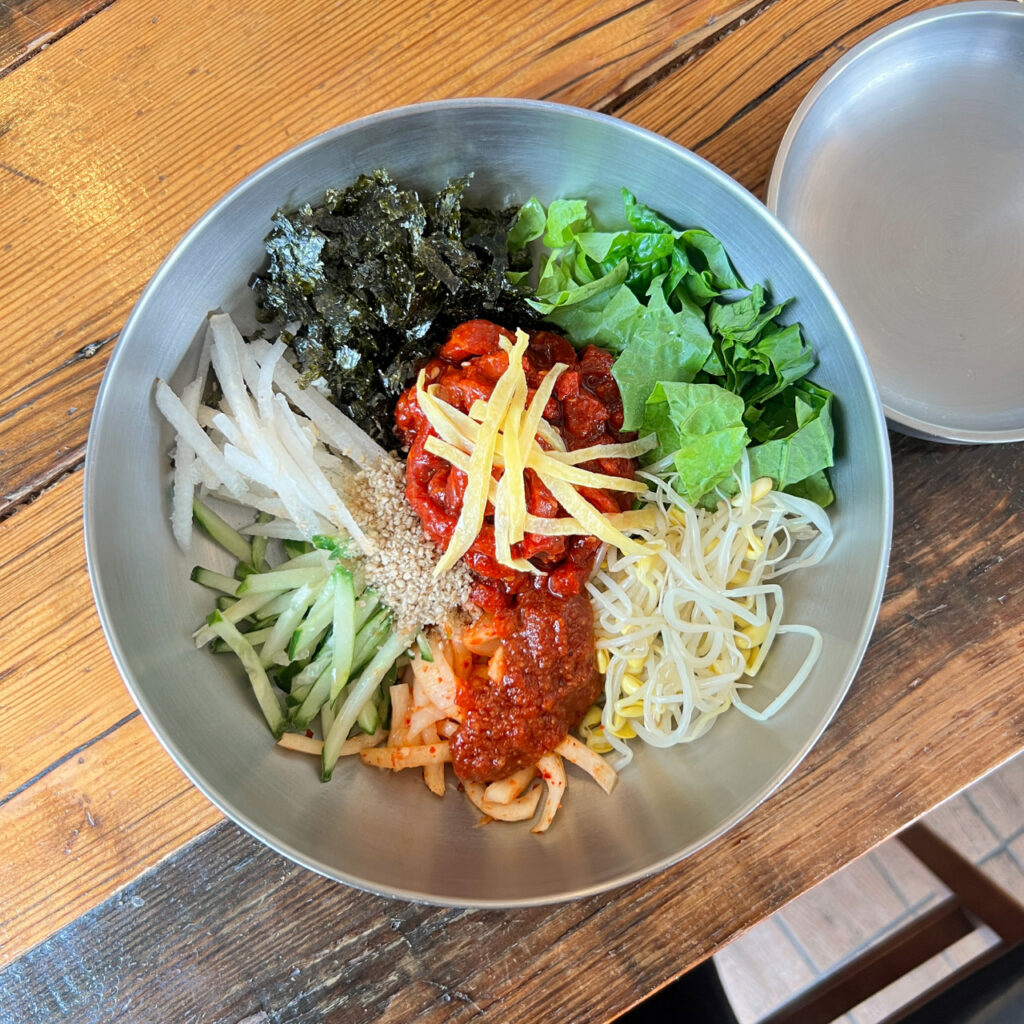
Finally, it’s time to have lunch. It is a restaurant called “Giwa” that is just a five-minute walk from the restaurant. “A famous traditional Korean chef won a prize in a cooking contest,” the sign says. The picture on the left is a traditional Korean pork dish that smells charcoal-grilled and is eaten with green onions. On the right is Bibimbap, a dish that is mixed with rice, vegetables, and red pepper paste. If you are a vegetarian, ask for the meat to be excluded.
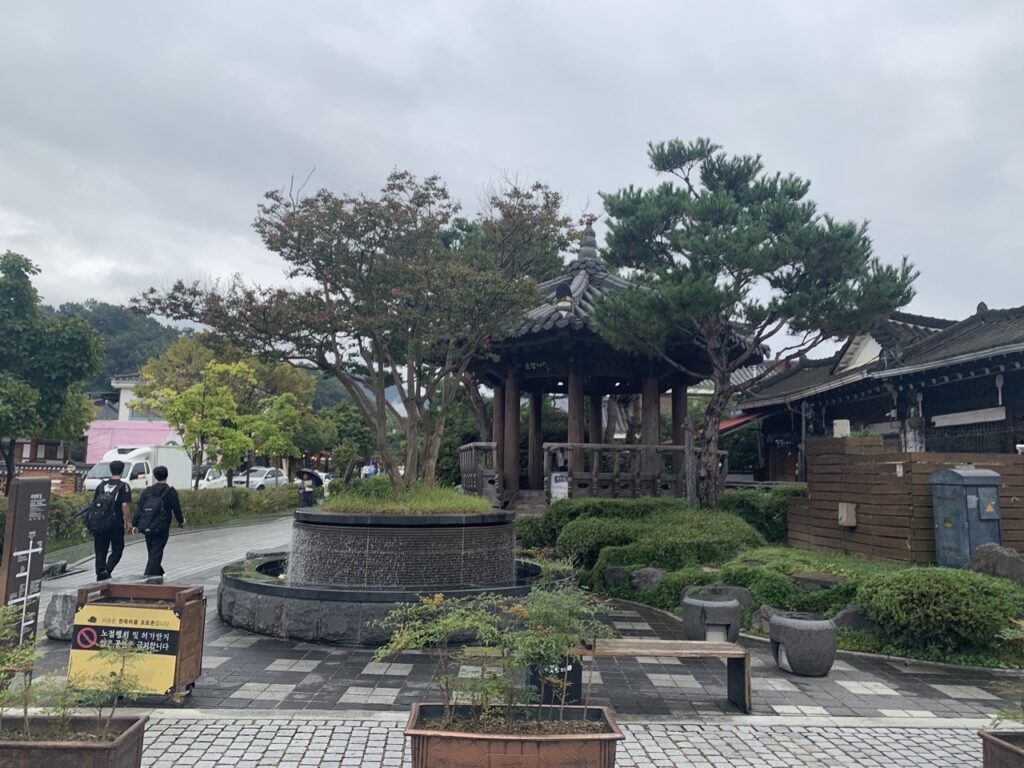
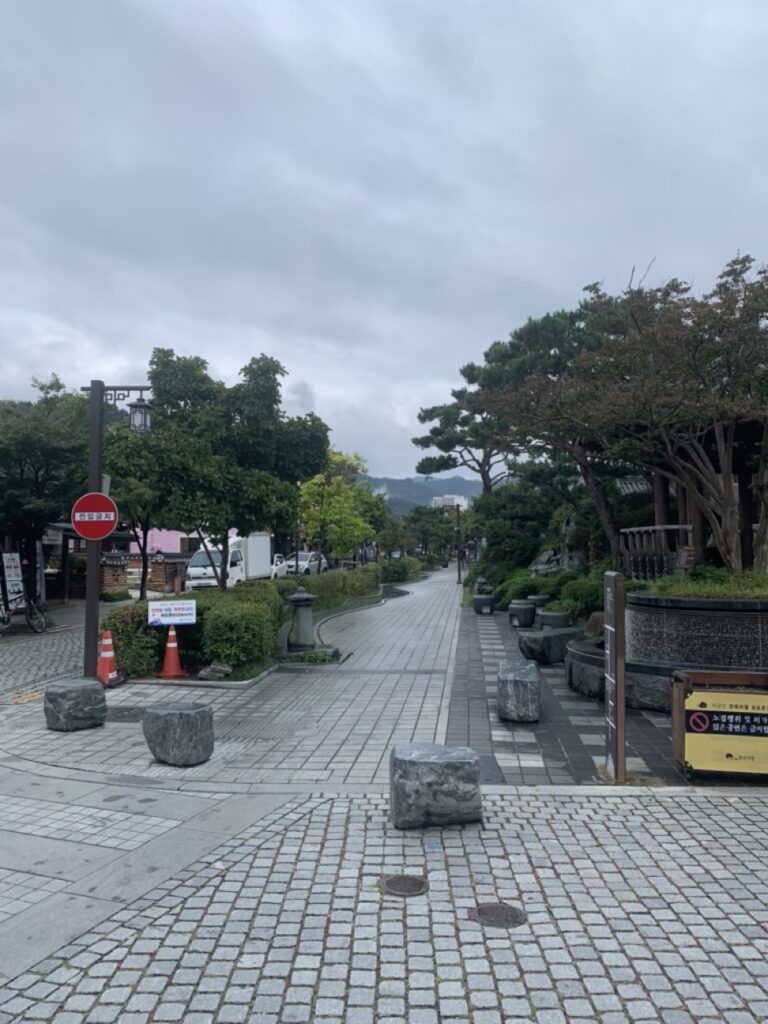

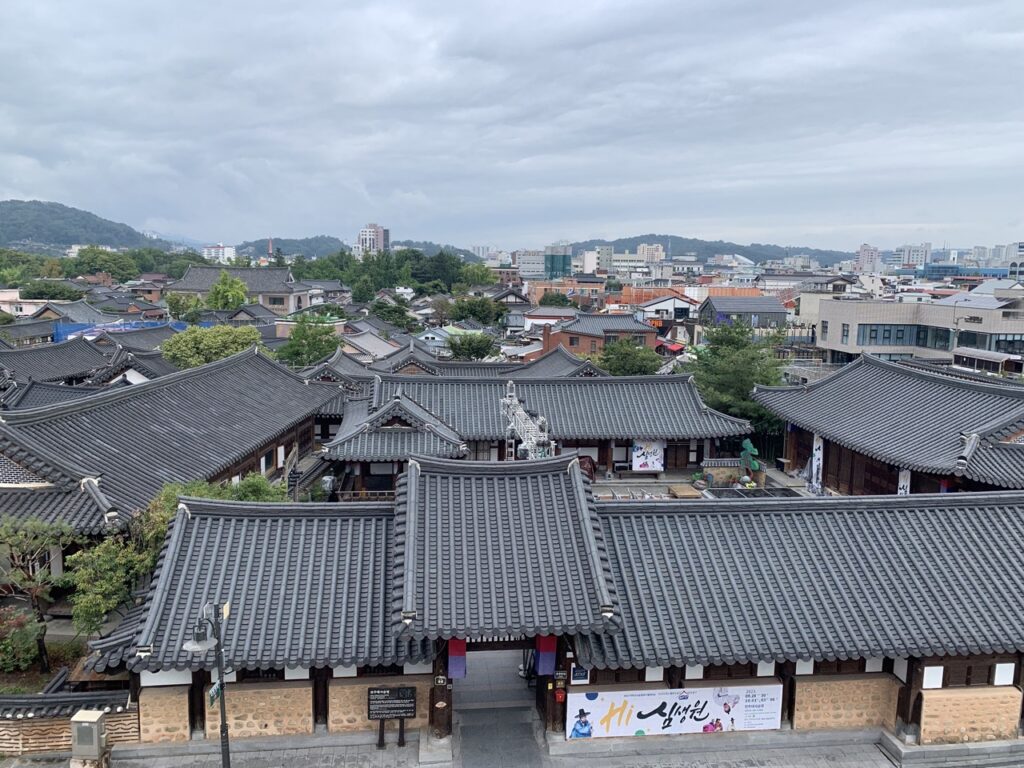

After lunch, I went up to the 3rd floor of the building where the restaurant is located and took a picture. There is a cafe on the 3rd floor, and I drank coffee and talked with my parents. When I went to a street food store even though it rained a lot, I could see many tourists. The introduction of Jeonju is not enough. I could have taken more pictures and let them know well, but I don’t have much data. If you come to Korea, make sure to visit Jeonju and try Korean food. This was a short trip to Jeonju Hanok for about 20 hours.
Watch my channel
